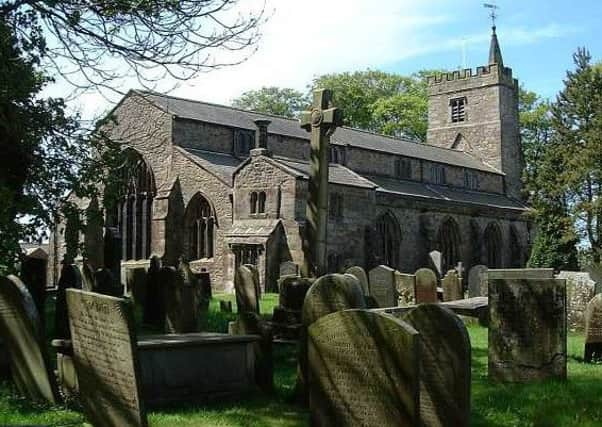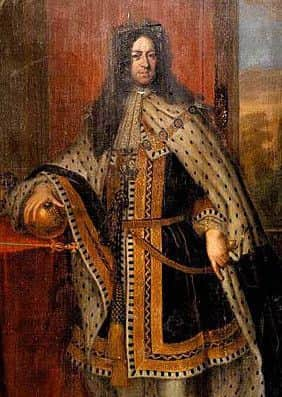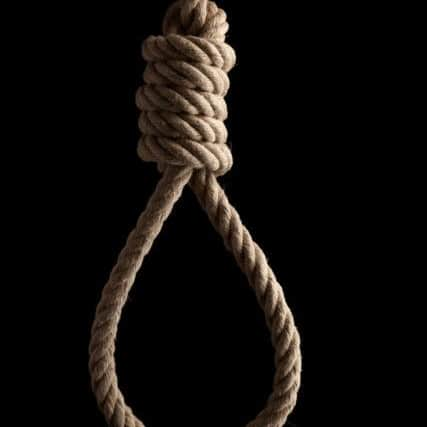Garstang's gruesome tale of capital offence


The main topic of conversation in Garstang in early 1716 was the likely fate of the local men who had taken part in the recent, though thwarted, rebellion against King George I.
The serious challenge to “German George” and the newly-installed Hanoverian dynasty chosen to rule the United Kingdom had come to an abrupt halt at the Battle of Preston in November 1715.
Advertisement
Hide AdAdvertisement
Hide AdSeveral prominent men from Garstang and district, some already known for their sympathies with the exiled Stuart dynasty, had thrown in their lot with the Scottish and northern English Jacobites as they marched southwards through Garstang en route to Preston.


As the 1,000-plus rebels had moved through Scotland, Cumberland, Westmorland and north Lancashire, they stopped for rest and picked up recruits.
Jacobite sympathisers in Garstang and district (mostly, though not exclusively Catholic) appear to have kept their views on politics and the monarchy low key and to themselves – until the advancing march of the rebels forced the hand of many to declare their loyalties.
In Garstang the rebels, just as they had done in other towns along their route, publicly pronounced Prince James Stuart as King James III of England (and James VIII of Scotland). The man making the proclamation in Garstang, was, it seems, one Roger Muncaster, a prominent lawyer (with links to both Garstang and Pilling). He was not a Catholic, but was described as “a High Church man”.
Advertisement
Hide AdAdvertisement
Hide AdBack in 1715, others supporting the Jacobite cause in this part of Lancashire had been local VIPs such as landowners Edward Tyldesley of Myerscough Lodge and John Leybourne of Nateby Hall. Other Jacobite supporters, slightly lower down the social order of the time, were Joseph Wadsworth and Thomas Goose, both from Catterall, and Thomas Cartmell of Claughton.


The Battle of Preston was the site of the last battle on English soil. Muncaster and the other Lancashire Jacobite sympathisers were likely to have been among the 1,000 or so taken prisoner, or rounded up, immediately after the victory of the government troops in the skirmishes in Preston from November 9 to 14 and charged with offences such as treason. The more important rebels (including Leybourne and Tyldesley) were sent to London for trial, the remainder to other towns around the county.
In the trial of Muncaster in January 1716, one witness, William Winder, constable of Garstang, told the court how the lawyer had forced him to provide meat for the Jacobites. In Muncaster’s defence, a maid confirmed a claim that Muncaster had been compelled to accompany the Jacobites to Preston.
The court found against Muncaster, who was one of the first Lancashire rebels to be executed. Unlike many of those who were about to die, he repented of his actions, saying, before his execution, his crime was “rebellion, a crime prohibited by the Laws of God and Man.” He was hanged in Preston on January 28, 1716. More executions followed over the next month – again at Preston as well as at Wigan, Garstang, Lancaster and Liverpool.
Advertisement
Hide AdAdvertisement
Hide AdThe reason for choice of Garstang, a smaller place than other towns where executions were carried out, was perhaps the gallows were intended as a warning to the rural – and still potentially rebellious population – to be wary of further disloyalty.


The Garstang executions which saw the deaths of four of the Lancashire rebels took place on February 14, 1716.
Those who died on the gallows were local men Joseph Wadsworth, Thomas Goose and Thomas Cartmell. The other was Allan Sanderson, a ship’s carpenter from Preston. Why Carpenter was brought from his home town to Garstang is not known.
The location of the hangings in Garstang is unclear. Sources suggest the executions took place at Catterall (at Stock Lane Ends, where the modern day Cock Robin Lane and Catterall Lane join the A6) or in Garstang township itself, perhaps in the Lancaster Road area (once known as Lancaster Lane).
Advertisement
Hide AdAdvertisement
Hide AdThe bodies of Wadsworth, Goose and Cartmell were buried in the grounds of the parish church of Garstang (St Helen’s, Churchtown). Their names are listed in the parish registers along with the word: “Rebels.” The precise location of their graves is not known.


Leybourne and Tyldesley were acquitted after trial. Others were also acquitted, including Thomas Walmesley, innkeeper of the White Bull, Bilsborrow, and Edward Sykes of “Nether Wyersdale.”
- Thanks to Dr Bill Shannon of Preston and Denis Livick of Garstang.